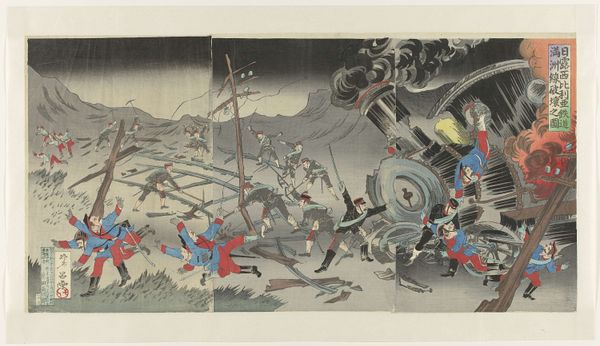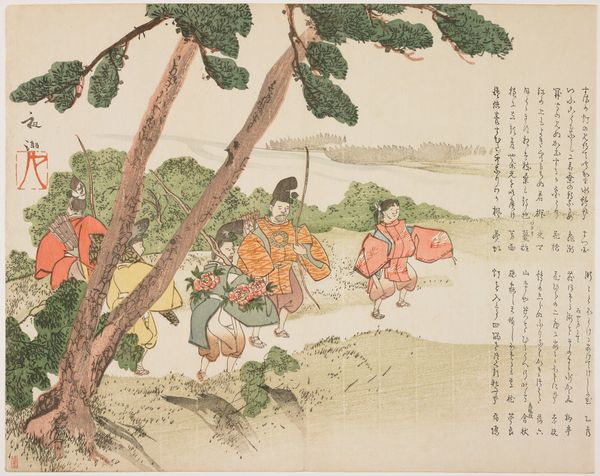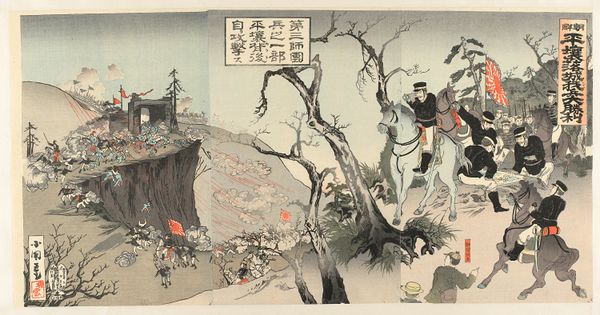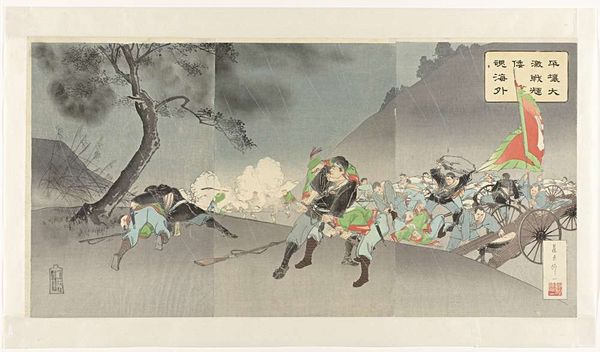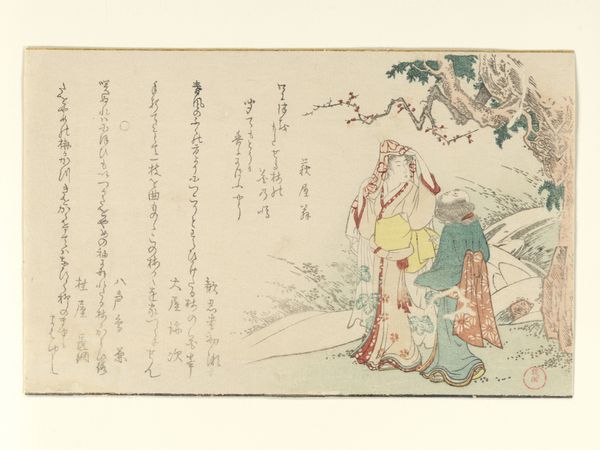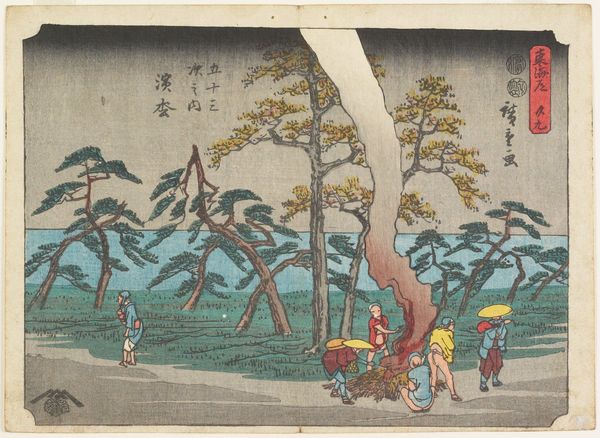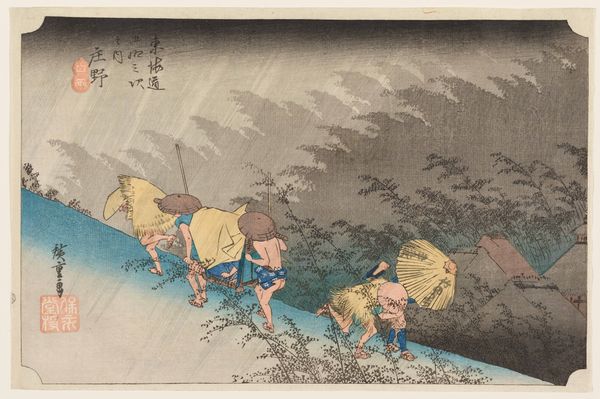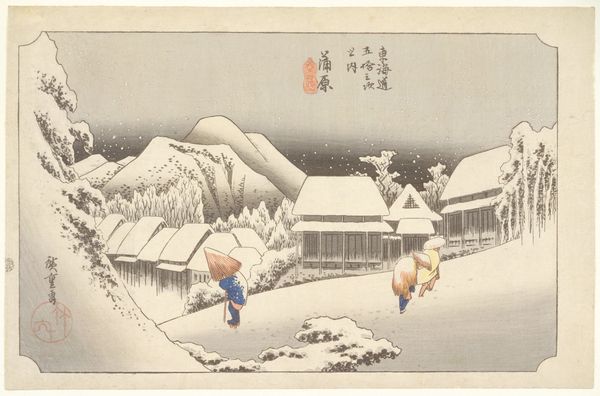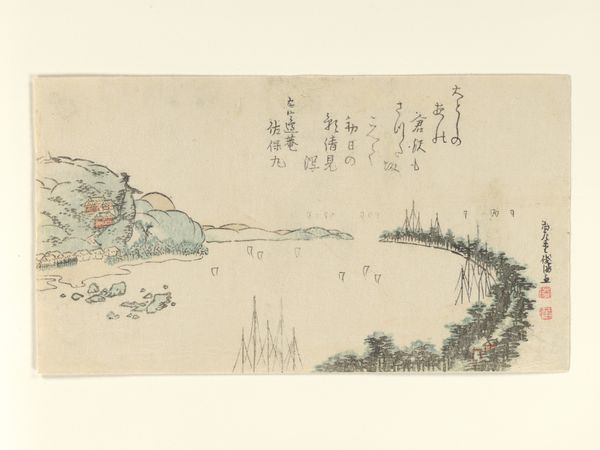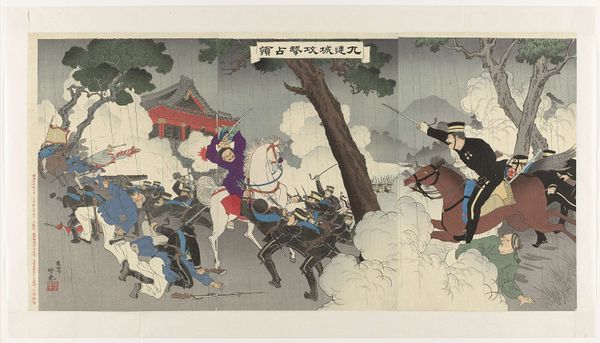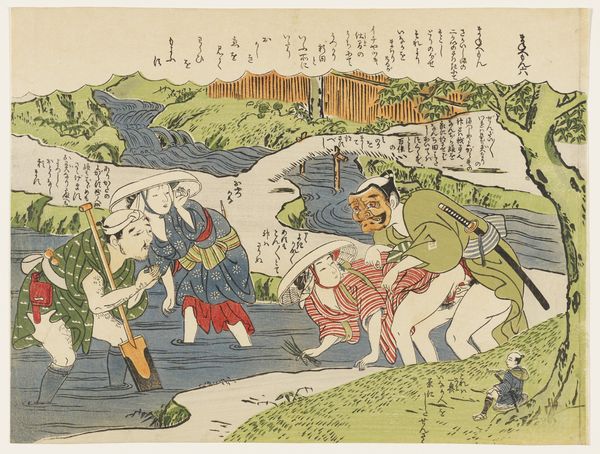
Dimensions: height 361 mm, width 723 mm
Copyright: Rijks Museum: Open Domain
Editor: This woodblock print, "The Great Battle of Jiuliancheng" by Utagawa Kokunimasa, depicts a scene from 1894. The chaotic composition immediately grabs you. The battle is raging, and you can almost hear the cannons. What do you see in this piece, from your perspective? Curator: I see layers of coded meaning embedded within the representation of this battle. Consider the flag; its rising sun motif signifies not just military power but also national identity and ambition in the Meiji era. Observe also how the artist chose to depict specific uniforms and weaponry, they reinforce the idea of modernity versus tradition, hinting at Japan's self-image as a rising, Westernized power overcoming what was perceived as a stagnant Qing Dynasty. How does the artist's choice affect your reading? Editor: So the symbolism extends beyond a simple depiction of war and victory, it conveys cultural and political statements through careful visual cues! I'd not have looked at the flag like that initially. Curator: Precisely. Even the way figures are rendered, notice how individual faces are treated - or not treated. These choices reflect the power dynamics the artist wanted to underline. The arrangement becomes a visual rhetoric contributing to Japan's national narrative at the time. Is it decorative, illustrative, informative or manipulative? Editor: It’s interesting how one image carries all those connotations and can be viewed differently depending on historical awareness. The print seems like both a document and propaganda. I will never look at war art in the same light now! Curator: Indeed, the cultural memory embedded within the symbolic language is powerful. Examining the history is so rewarding, unlocking further meaning each time.
Comments
No comments
Be the first to comment and join the conversation on the ultimate creative platform.
